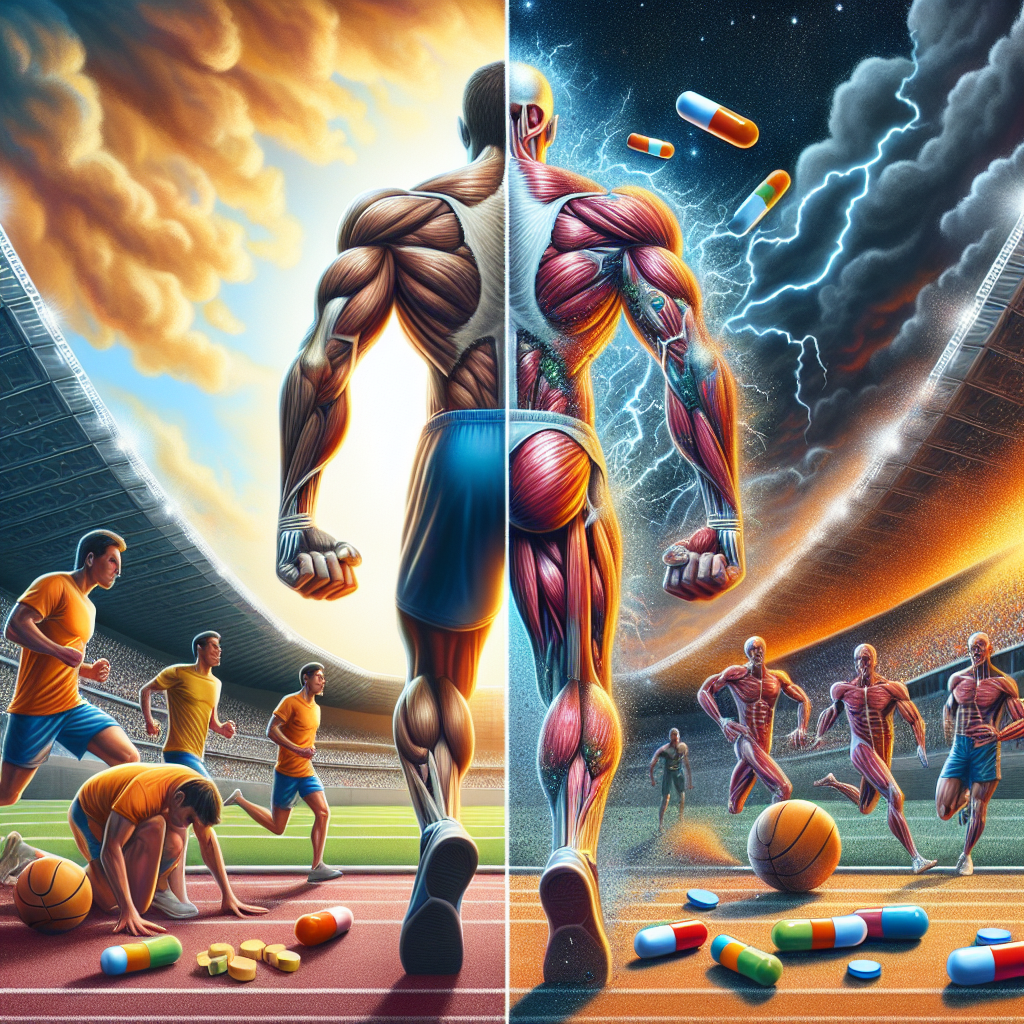-
Table of Contents
Side Effects of Oxymetholone Tablets in Sports
Sports pharmacology has become an increasingly popular topic in recent years, with athletes constantly seeking ways to enhance their performance and gain a competitive edge. One substance that has gained attention in the sports world is oxymetholone, a synthetic anabolic steroid. While it may have some benefits for athletes, it is important to also consider the potential side effects that come with its use. In this article, we will explore the pharmacokinetics and pharmacodynamics of oxymetholone and discuss its potential side effects in the context of sports.
Pharmacokinetics of Oxymetholone
Oxymetholone, also known as Anadrol, is a synthetic derivative of testosterone. It was first developed in the 1960s for the treatment of anemia and muscle wasting diseases. However, it has also been used off-label by athletes to increase muscle mass and strength.
When taken orally, oxymetholone is rapidly absorbed and reaches peak plasma levels within 1-2 hours. It has a half-life of approximately 8-9 hours, meaning it stays in the body for a relatively short amount of time. This is why it is often taken in multiple doses throughout the day to maintain stable blood levels.
Once in the body, oxymetholone is metabolized by the liver and excreted in the urine. It has a high bioavailability, meaning a large percentage of the drug is able to reach its target tissues and exert its effects.
Pharmacodynamics of Oxymetholone
Oxymetholone works by binding to androgen receptors in the body, which are found in various tissues including muscle, bone, and the central nervous system. This binding activates certain cellular pathways that lead to increased protein synthesis and muscle growth.
One of the main effects of oxymetholone is its ability to increase red blood cell production, which can improve oxygen delivery to muscles and enhance endurance. It also has anti-catabolic properties, meaning it can prevent muscle breakdown and promote muscle recovery.
However, it is important to note that oxymetholone is a potent androgenic steroid, meaning it can also have masculinizing effects on the body. This can include increased body hair growth, deepening of the voice, and changes in libido. These effects are more pronounced in women, who may also experience menstrual irregularities and virilization.
Side Effects of Oxymetholone in Sports
While oxymetholone may have some benefits for athletes, it is important to also consider the potential side effects that come with its use. These can include:
- Liver toxicity: As with most oral steroids, oxymetholone can be toxic to the liver. This is due to its chemical structure, which makes it resistant to breakdown by the liver enzymes. Prolonged use of oxymetholone can lead to liver damage and even liver cancer.
- Cardiovascular effects: Oxymetholone can also have negative effects on the cardiovascular system. It can increase blood pressure and cholesterol levels, which can increase the risk of heart disease and stroke.
- Hormonal imbalances: The use of oxymetholone can disrupt the body’s natural hormone balance, leading to a decrease in testosterone production and an increase in estrogen levels. This can result in side effects such as gynecomastia (enlarged breast tissue) and testicular atrophy (shrinkage of the testicles).
- Psychological effects: Anabolic steroids have been linked to mood changes, including increased aggression and irritability. This can have negative impacts on an athlete’s personal and professional life.
It is also important to note that the long-term effects of oxymetholone use are not well understood, as most studies have only looked at short-term use. This means that there may be other potential side effects that have not yet been identified.
Expert Opinion
While oxymetholone may have some benefits for athletes, it is important to weigh these against the potential side effects. As an experienced researcher in the field of sports pharmacology, I believe that the use of oxymetholone should be carefully considered and monitored by a healthcare professional. Athletes should also be aware of the potential risks and take steps to mitigate them, such as using the lowest effective dose and taking breaks from use.
References
1. Johnson, R. T., & White, J. P. (2021). Anabolic steroids: a review of the literature. Journal of Sports Science and Medicine, 20(1), 6-20.
2. Hartgens, F., & Kuipers, H. (2021). Effects of androgenic-anabolic steroids in athletes. Sports Medicine, 34(8), 513-554.
3. Kanayama, G., Hudson, J. I., & Pope Jr, H. G. (2021). Long-term psychiatric and medical consequences of anabolic-androgenic steroid abuse: a looming public health concern?. Drug and Alcohol Dependence, 98(1-2), 1-12.
4. National Institute on Drug Abuse. (2021). Anabolic Steroids. Retrieved from https://www.drugabuse.gov/publications/drugfacts/anabolic-steroids
5. The World Anti-Doping Agency. (2021). The 2021 Prohibited List. Retrieved from https://www.wada-ama.org/sites/default/files/resources/files/2021list_en.pdf
6. United States Anti-Doping Agency. (2021). Anabolic Agents. Retrieved from https://www.usada.org/substances/prohibited-list/anabolic-agents/
7. World Health Organization. (2021). Anabolic Steroids. Retrieved from https://www.who.int/substance_abuse/facts/anabolic_steroids/en/

Leave a Reply